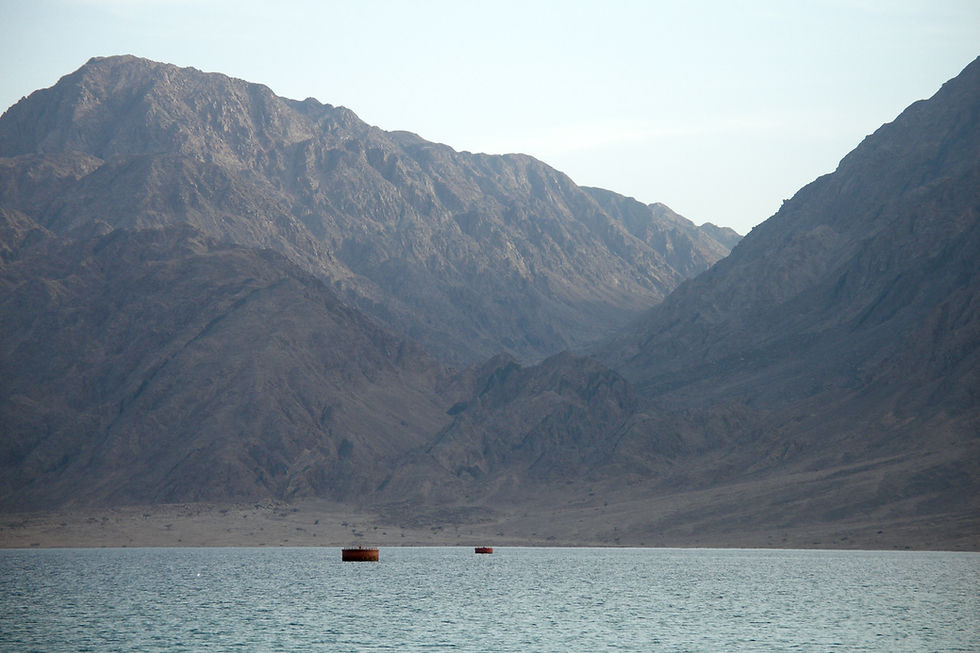Australia Must Look West to Face Threats from the East
- Jul 9, 2023
- 4 min read
Gemma King | Indo-Pacific Fellow
The term “Indo-Pacific” has set the course for Australian foreign and defence policy discourse for the last decade. It first appeared prominently in the 2013 Defence White Paper and has been ubiquitous in government messaging ever since. It describes a region that encompasses the Indian and Pacific Oceans, with Australia positioned uniquely in the middle.
The government often describes the Indo-Pacific as the most important geostrategic region in the world. It is home to over half the world’s population, three of the world’s largest economies (China, Japan, India) and is home to the business international sea lanes.
On paper, Australian foreign policy takes a holistic approach to the Indo-Pacific. In practice, though, policy decisions tend to be heavily weighted towards the Pacific, neglecting the vital strategic importance of the Indian Ocean.
Australia’s Pacific bias
Australia has its navel feet firmly planted in the Pacific, funnelling billions of dollars in foreign aid to the region yearly. In 2016, the Liberal government significantly boosted funding under the Pacific Step-up program, which the Albanese Labor government has retained. Within its first 12 months in office, Albanese cabinet ministers visited every Pacific Islands Forum member country, recently announcing AU$1.4 billion in regional investment over the next four years.
It is understandable why Australian statecraft has prioritised the Pacific. Australia has a clear interest in countering China’s brinksmanship, maintaining political stability, and building climate resilience in its immediate neighbourhood. But Canberra is closer to the Pacific Ocean than the Indian Ocean, and policy decisions reflect a strong tendency for Australia to look immediately east.
But this outlook dismisses Western Australia’s national security importance. Furthermore, it downplays strategic challenges from Australia’s western and north-western shores. WA is exposed to emerging threats in the Indian Ocean, including growing Chinese presence that threatens vital maritime shipping routes. China is rapidly embedding itself in the Indian Ocean, including funding port infrastructure in Sri Lanka and Pakistan, and even a military base in Dijbouti.
We need to invest our resources in the Indian Ocean to manage long-term strategic risk. The balance of power in the Indian Ocean could change in the coming years, and Australia should be turning its defence policy priorities towards greater engagement with the region.
Changing directions
Little by little, Australian policymakers are turning their attention westward. The 2023 Defence Strategic Review (DSR) identifies Australia as an “Indian Ocean state with the longest Indian Ocean coastline.” As such, the authors argue that defence assets should be refocussed to acknowledge that the Indian Ocean will be Australia’s primary area of military interest. The DRS recommends adjusting force structure, posture and planning to account for this – including developing undersea warfare capabilities and long-range precision strike capability.
The DSR’s strong focus on the Indian Ocean is no coincidence. The review was primarily led by former Foreign Minister and Defence Minister Stephen Smith, a Western Australian who has long challenged foreign policy orthodoxy. He championed entrenching the Indo-Pacific concept in the 2013 Defence White Paper. Between government appointments, he has continued efforts to build Australia’s connection to the region before becoming High Commissioner to the UK. Smith’s contributions to the national security debate are a welcome break from narratives dominated by an often parochial outlook on Australia’s international neighbourhood.
The AUKUS partnership also indicates a step in the right direction. Western Australia will be at the forefront of Australia’s acquisition of nuclear-powered submarines (SSNs). Beginning this year, US and UK SSNs will visit HMAS Stirling, Australia’s largest naval base just south of Perth. By 2027, US and UK SSNs will regularly rotate through the base. Once Australia has its own nuclear capability from the early 2030s, it will be home to Australia’s fleet of eight SSNs.
A path forward
There is still much work to be done to integrate Australia into the Indian Ocean region. As the country grapples with strategic uncertainty not seen since the Second World War, the western coastline will grow in importance, not least because two of the world’s biggest economies–India and Indonesia–are Indian Ocean-facing. On the defence side, tweaking Australia’s bilateral security arrangements with the US to focus more on the Indian Ocean will also be essential.
In the coming years, increased involvement with Indian Ocean regional architecture will be key to expanding Australia’s engagement. This includes continued involvement with the Indian Ocean Rim Association as the region’s only forum facilitating dialogue between governments on Indian Ocean issues. Australia should also continue to pursue focused bilateral partnerships with regional countries including India and Indonesia.
Australia has a significant role to play in the region, and its policy settings should prioritise expanding international engagement become as familiar with the Indian Ocean as it is with the Pacific. If Australia fails to properly invest in the Indian Ocean, we risk losing the regional balance of power as we know it. If growing Chinese presence goes unchecked, the Indian Ocean could turn into a region characterised by intense strategic competition – and even conflict.
Gemma King is the Indo-Pacific Fellow at Young Australians in International Affairs.




Comments